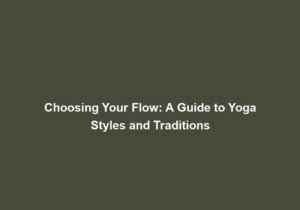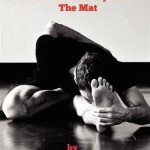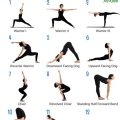Finding the Right Yoga Tradition: A Comprehensive Guide for Every Practitioner
Yoga has grown from ancient practice to a global phenomenon, offering a diverse range of traditions, each with its own unique philosophy, methods, and benefits. Choosing between yoga traditions can be challenging for beginners and seasoned practitioners alike, as it involves navigating through an array of beliefs, techniques, and goals. This article provides an in-depth exploration of the most prominent yoga traditions, their historical contexts, current practices, and practical applications to help you find the perfect fit for your needs and aspirations.
Introduction
With the proliferation of different yoga traditions, from Hatha to Ashtanga to Kundalini, yoga can seem overwhelming at first glance. Each tradition offers distinct advantages and attracts various groups of practitioners depending on their personal goals—whether physical fitness, mental clarity, or spiritual growth. The challenge lies in understanding these traditions deeply enough to make an informed choice. In this guide, we’ll analyze the key concepts of major yoga schools, provide historical context, evaluate current trends, and explore practical and ethical considerations for practitioners.
Key Concepts
- Hatha Yoga: Focuses on physical postures (asanas) and breath control (pranayama) to harmonize the body and mind.
- Ashtanga Yoga: A dynamic and physically demanding practice with a set series of postures linked by the breath.
- Kundalini Yoga: Emphasizes awakening energy at the base of the spine through breathwork, chanting, and movement.
- Iyengar Yoga: Known for its precision in alignment and extensive use of props to achieve perfect posture.
- Bikram Yoga: A form of hot yoga with a strict sequence of 26 postures practiced in a heated room.
- Vinyasa Yoga: A flowing style of yoga where movements are synchronized with the breath in a fluid, creative sequence.
Historical Context
Understanding the history of each yoga tradition offers valuable insights into its core philosophies:
| Yoga Tradition | Origins | Philosophy |
|---|---|---|
| Hatha Yoga | Developed in the 11th century, Hatha is one of the oldest forms of yoga, rooted in Tantric traditions. | Focuses on balancing the body and mind through physical practice to prepare for meditation. |
| Ashtanga Yoga | Founded by K. Pattabhi Jois in the 20th century, based on ancient yoga teachings described in the Yoga Korunta. | Ashtanga integrates the eight limbs of yoga with a strict, sequential practice that develops strength and flexibility. |
| Kundalini Yoga | Popularized in the West by Yogi Bhajan in the late 1960s, though it has roots in ancient India and Tantric teachings. | Aims to awaken the dormant energy (kundalini) at the base of the spine and move it through the chakras for spiritual awakening. |
| Iyengar Yoga | Developed by B.K.S. Iyengar, one of the most respected yoga teachers, who emphasized precision and alignment in postures. | Utilizes props to perfect posture and focuses on physical discipline and attention to detail. |
Current State Analysis
Today, yoga traditions have diversified further, with modern hybrids emerging, often blending practices and approaches. Here’s a snapshot of the current landscape:
- Hatha Yoga: Continues to be the foundation of most modern yoga styles, offering beginner-friendly classes that emphasize slow-paced postures and breath control.
- Ashtanga Yoga: Favored by advanced practitioners due to its rigor and physical demands. It remains popular in yoga studios globally, though some criticize its lack of flexibility for beginners.
- Kundalini Yoga: Gaining in popularity, especially among those seeking a spiritual or meditative practice rather than just physical exercise.
- Iyengar Yoga: Attracts practitioners interested in anatomy and precision, providing therapeutic benefits for those recovering from injury.
- Vinyasa Yoga: The most popular style in gyms and yoga studios due to its dynamic, creative, and adaptable nature.
Practical Applications
Each yoga tradition has unique practical benefits:
- Hatha Yoga: Ideal for beginners, focusing on gentle movements, relaxation, and mindful breathing.
- Ashtanga Yoga: Best suited for experienced practitioners or athletes seeking a structured, challenging routine to build endurance and discipline.
- Kundalini Yoga: Appeals to those interested in personal transformation, meditation, and spiritual practices, incorporating breathwork and chanting.
- Iyengar Yoga: Helpful for those needing to correct physical alignment issues or recover from injuries, emphasizing slow, deliberate movements.
Case Studies
Below are case studies that illustrate how specific yoga traditions have impacted practitioners:
| Case Study | Yoga Tradition | Outcome |
|---|---|---|
| John, a software engineer, suffering from chronic back pain | Iyengar Yoga | After six months of practice, John’s pain decreased significantly due to improved posture and muscle alignment. |
| Sarah, a college student battling anxiety | Kundalini Yoga | Regular meditation and breathwork helped Sarah reduce stress and improve mental clarity. |
| Mark, a marathon runner, looking for strength training | Ashtanga Yoga | Incorporating Ashtanga into his routine increased Mark’s core strength and stamina, leading to faster race times. |
Stakeholder Analysis
The different stakeholders in yoga traditions include individual practitioners, yoga teachers, healthcare professionals, and fitness businesses. Each group has distinct needs and priorities:
- Practitioners: Look for alignment between personal goals (physical, mental, spiritual) and the yoga style they practice.
- Yoga Teachers: Choose traditions that resonate with their personal philosophy and align with their students’ needs.
- Healthcare Professionals: Recommend specific yoga styles to address health issues such as stress, back pain, or anxiety.
- Fitness Businesses: Favor trends like Vinyasa and Hot Yoga due to their popularity and broad appeal to fitness-conscious clients.
Implementation Guidelines
To successfully choose and implement a yoga tradition, consider these factors:
- Personal Goals: Decide whether your priority is fitness, relaxation, spiritual growth, or flexibility.
- Teacher Selection: Choose a certified and experienced instructor aligned with the tradition you want to practice.
- Adaptability: Be open to mixing traditions as your needs evolve over time.
- Consistency: Yoga requires regular practice. Commit to a schedule that fits your lifestyle, whether daily or weekly.
Ethical Considerations
While yoga is widely regarded as a healthy and positive practice, there are ethical concerns to be aware of, particularly around commercialization and cultural appropriation. Practitioners should respect yoga’s roots in Indian culture and understand its deeper philosophies beyond the physical postures. It’s essential to practice yoga with awareness, humility, and respect for its spiritual dimensions.
Limitations and Future Research
There are a few limitations in current research on the effectiveness of different yoga traditions. More studies are needed to quantify the specific benefits of each style, particularly in relation to long-term mental health benefits. Future research could also explore the impact of hybrid forms of yoga, such as Power Yoga and Aerial Yoga, which blend traditional practices with modern fitness trends.
Expert Commentary
Ultimately, the best yoga tradition for any individual depends on their personal goals and preferences. Hatha yoga provides an excellent foundation for beginners, while Ashtanga offers a structured challenge for those seeking physical discipline. Kundalini appeals to those on a spiritual quest, and Iyengar is ideal for anyone recovering from injury or seeking physical precision. In an increasingly commercialized world of yoga, it is crucial to practice with mindfulness and a deep respect for the origins of these ancient traditions.








